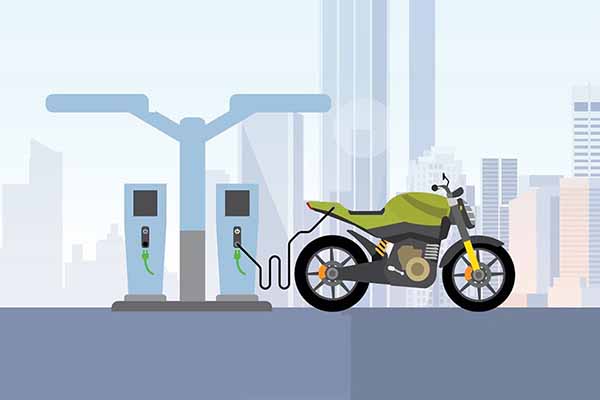Eco-Friendly Commuting: Exploring Electric Bikes

In recent years, electric bikes, also known as e-bikes, have gained popularity as a sustainable and convenient mode of transportation for urban commuters and recreational cyclists alike. Combining the convenience of traditional bicycles with the assistance of electric motors, e-bikes offer an eco-friendly alternative to cars and public transportation, providing riders with a fast, efficient, and enjoyable way to navigate city streets and scenic trails. In this comprehensive exploration, we delve into the world of electric bikes, examining their technology, benefits, challenges, and the transformative impact they have on urban mobility and personal fitness.
Electric bikes are bicycles equipped with electric motors that provide varying levels of assistance to riders, depending on their preferences and riding conditions. These motors are typically powered by rechargeable lithium-ion batteries, which can be mounted on the frame or integrated into the bike&8217;s design. Riders can activate the electric assistance through a handlebar-mounted control panel or pedal sensors, allowing them to adjust the level of assistance and maintain their desired speed with ease.
There are two main types of electric bike systems: pedal-assist (also known as pedelec) and throttle-controlled. Pedal-assist e-bikes provide assistance only when the rider pedals, while throttle-controlled e-bikes allow riders to engage the motor with a twist throttle or button without pedaling. Both systems offer varying levels of assistance, ranging from low to high, to accommodate different riding preferences and terrains.
Benefits of Electric Bikes
The adoption of electric bikes offers numerous benefits for riders, communities, and the environment:
Sustainable Transportation: Electric bikes provide a sustainable and eco-friendly alternative to cars and motorcycles, reducing greenhouse gas emissions, air pollution, and traffic congestion in urban areas.
Efficient Commuting: E-bikes allow riders to navigate city streets and congested traffic more efficiently than traditional bicycles, enabling faster travel times and reducing commute stress.
Improved Accessibility: Electric bikes make cycling more accessible to a wider range of individuals, including those with physical limitations or fitness concerns, by providing assistance with pedaling and overcoming hills and headwinds.
Health and Fitness Benefits: While electric bikes offer assistance with pedaling, riders still engage in physical activity and exercise, promoting cardiovascular health, muscle strength, and overall fitness.
Cost Savings: Electric bikes are more cost-effective to operate than cars and motorcycles, requiring minimal maintenance, no fuel costs, and lower insurance premiums.
Last-Mile Connectivity: E-bikes serve as an ideal solution for last-mile connectivity, allowing commuters to bridge the gap between public transportation hubs and their final destinations quickly and conveniently.
Challenges and Consideration
Despite their numerous benefits, electric bikes also face certain challenges and considerations:
Regulatory Framework: Regulations governing the use of electric bikes vary by region and jurisdiction, leading to uncertainty and confusion among riders and policymakers regarding where e-bikes are allowed to operate and under what conditions.
Safety Concerns: Electric bikes travel at higher speeds than traditional bicycles, raising concerns about rider safety, pedestrian interactions, and collisions with other vehicles. Adequate infrastructure, rider education, and enforcement of traffic laws are essential to mitigate these safety risks.
Range Limitations: The range of electric bikes is limited by battery capacity and riding conditions, such as terrain, rider weight, and weather. Riders may experience range anxiety if they exceed the battery&8217;s capacity or encounter unexpected obstacles during their journey.
Battery Management: Lithium-ion batteries used in electric bikes require proper management and maintenance to ensure optimal performance and longevity. Factors such as temperature extremes, overcharging, and deep discharges can affect battery health and lifespan
Theft and Security: Electric bikes are valuable targets for theft due to their high cost and popularity. Securing e-bikes with locks, alarms, and GPS tracking devices can help deter theft and recover stolen bikes.
The Future of Electric Bikes: Innovations and Trends
Looking ahead, the future of electric bikes holds great promise, with ongoing advancements in technology and infrastructure driving continued growth and innovation. Some key trends and innovations shaping the future of electric bikes include:
Integrated Design: Electric bike manufacturers are increasingly integrating electric motors and batteries into the frame and components of the bike, resulting in sleeker, more streamlined designs that resemble traditional bicycles.
Smart Features: Electric bikes are incorporating smart features such as GPS navigation, smartphone connectivity, and ride tracking apps to enhance the riding experience and provide riders with real-time feedback and analytics.
Longer Range Batteries: Advances in battery technology are extending the range of electric bikes, allowing riders to travel longer distances on a single charge and tackle more challenging terrain with confidence.
Folding and Portable Designs Foldable electric bikes are gaining popularity among urban commuters and travelers, offering compact, lightweight solutions for storage, transportation, and multi-modal commuting.
Cargo and Utility E-bikes: Cargo e-bikes equipped with racks, baskets, and cargo compartments are emerging as practical solutions for transporting goods, groceries, and passengers in urban environments.
Conclusion
In conclusion, electric bikes represent a promising and sustainable solution to the transportation challenges facing urban communities around the world. With their blend of convenience, efficiency, and environmental friendliness, e-bikes offer a compelling alternative to cars, motorcycles, and traditional bicycles for commuting, recreation, and everyday errands. While challenges such as regulatory uncertainty, safety concerns, and range limitations persist, ongoing advancements in technology, infrastructure, and public awareness are driving the widespread adoption of electric bikes worldwide. As we continue to embrace e-bikes as a key component of sustainable urban mobility, we move closer to creating healthier
